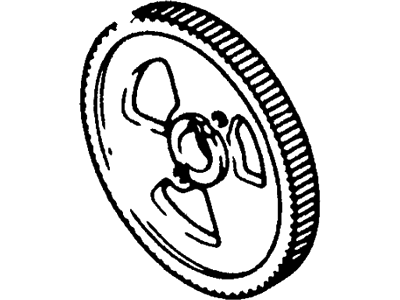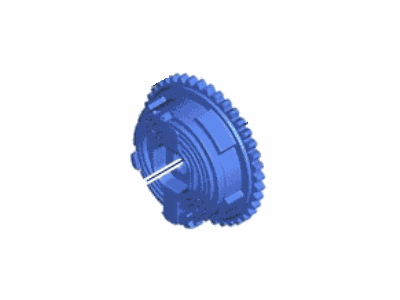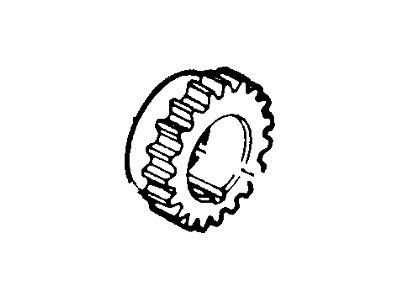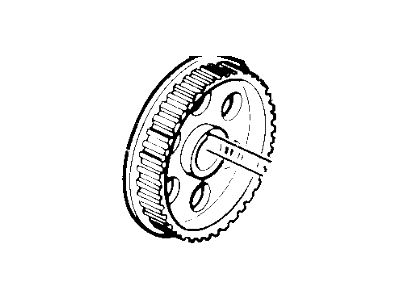

My Garage
My Account
Cart
Genuine Ford Bronco Variable Timing Sprocket
Timing Gear Sprocket- Select Vehicle by Model
- Select Vehicle by VIN
Select Vehicle by Model
orMake
Model
Year
Select Vehicle by VIN
For the most accurate results, select vehicle by your VIN (Vehicle Identification Number).
7 Variable Timing Sprockets found
Ford Bronco Sprocket - Camshaft
Part Number: E1TZ-6256-A$42.14 MSRP: $57.58You Save: $15.44 (27%)Ships in 1-2 Business DaysFord Bronco Camshaft Sprocket
Part Number: K2GZ-6256-A$118.63 MSRP: $173.43You Save: $54.80 (32%)Ships in 1-3 Business Days
Ford Bronco Variable Timing Sprocket
We provide a wide range of Ford Bronco Variable Timing Sprocket at the best prices possible. If you need Ford Bronco Variable Timing Sprocket, you can shop with confidence on our website. All our OEM parts come with a manufacturer's warranty and are delivered to your door step with a fast delivery service.
Ford Bronco Variable Timing Sprocket Parts Questions & Experts Answers
- Q: How to check the timing chain,Timing Sprocket, endplay, and timing gear on Ford Bronco?A:To check the timing chain on all engines except the 4.9L, remove the timing cover and turn the Crankshaft counterclockwise to take up slack on the left side of the chain. At the mid-point of the right side chain run, push the chain out with a finger while holding a graduated scale against it to establish an initial measurement using the centerline of one link pin as a reference. Then, push the chain in the opposite direction and measure the total deflection from the initial point. Compare this measurement to the specified figure; if excessive, replace the chain and both sprockets, as it is advisable to do so during a major overhaul. For the endplay check on all engines, use a magnetic base dial indicator. Push the Camshaft to the rear of its travel in the block, install the dial indicator on the camshaft gear/sprocket retaining bolt, and zero it. Use a large screwdriver to pull the camshaft forward and release it, noting the reading on the dial indicator for the endplay measurement. If excessive, check the spacer installation; if correct and endplay remains too great, replace the thrust plate. For the 4.9L engine, check the timing gear backlash by installing a dial indicator on the cylinder block against the timing gear, zeroing the pointer, and moving the camshaft timing gear until all slack is taken up, then reading the dial indicator. If backlash is excessive, replace both the timing gear and the crankshaft gear. To check the timing gear runout, install a dial indicator on the engine block with the stem touching the timing gear face, hold the camshaft gear against the thrust plate, zero the indicator, and rotate the crankshaft to turn the camshaft while holding the gear against the plate. Observe the reading during one complete revolution; if runout exceeds specifications, check for foreign objects or burrs between the camshaft and gear flanges, and if none are found, replace the gears. A similar procedure applies to check the crankshaft gear runout, ensuring the crankshaft is against one end of the thrust bearing to avoid measuring endplay instead of actual runout.
Related Ford Bronco Parts
Browse by Year
2023 Variable Timing Sprocket 2022 Variable Timing Sprocket 2021 Variable Timing Sprocket 1996 Variable Timing Sprocket 1995 Variable Timing Sprocket 1994 Variable Timing Sprocket 1993 Variable Timing Sprocket 1992 Variable Timing Sprocket 1991 Variable Timing Sprocket 1990 Variable Timing Sprocket 1989 Variable Timing Sprocket 1988 Variable Timing Sprocket 1987 Variable Timing Sprocket 1986 Variable Timing Sprocket 1985 Variable Timing Sprocket 1983 Variable Timing Sprocket 1982 Variable Timing Sprocket 1981 Variable Timing Sprocket 1980 Variable Timing Sprocket














